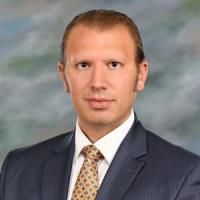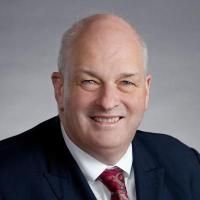How Good Are Surgeons at Achieving Their Preoperative Goal Sagittal Alignment Following Adult Deformity Surgery?
Date
2023-02
Journal Title
Journal ISSN
Volume Title
Repository Usage Stats
views
downloads
Citation Stats
Attention Stats
Abstract
Study design
Multicenter, prospective cohort.Objectives
Malalignment following adult spine deformity (ASD) surgery can impact outcomes and increase mechanical complications. We assess whether preoperative goals for sagittal alignment following ASD surgery are achieved.Methods
ASD patients were prospectively enrolled based on 3 criteria: deformity severity (PI-LL ≥25°, TPA ≥30°, SVA ≥15 cm, TCobb≥70° or TLCobb≥50°), procedure complexity (≥12 levels fused, 3-CO or ACR) and/or age (>65 and ≥7 levels fused). The surgeon documented sagittal alignment goals prior to surgery. Goals were compared with achieved alignment on first follow-up standing radiographs.Results
The 266 enrolled patients had a mean age of 61.0 years (SD = 14.6) and 68% were women. Mean instrumented levels was 13.6 (SD = 3.8), and 23.2% had a 3-CO. Mean (SD) offsets (achieved-goal) were: SVA = -8.5 mm (45.6 mm), PI-LL = -4.6° (14.6°), TK = 7.2° (14.7°), reflecting tendencies to undercorrect SVA and PI-LL and increase TK. Goals were achieved for SVA, PI-LL, and TK in 74.4%, 71.4%, and 68.8% of patients, respectively, and was achieved for all 3 parameters in 37.2% of patients. Three factors were independently associated with achievement of all 3 alignment goals: use of PACs/equivalent for surgical planning (P < .001), lower baseline GCA (P = .009), and surgery not including a 3-CO (P = .037).Conclusions
Surgeons failed to achieve goal alignment of each sagittal parameter in ∼25-30% of ASD patients. Goal alignment for all 3 parameters was only achieved in 37.2% of patients. Those at greatest risk were patients with more severe deformity. Advancements are needed to enable more consistent translation of preoperative alignment goals to the operating room.Type
Department
Description
Provenance
Subjects
Citation
Permalink
Published Version (Please cite this version)
Publication Info
Smith, Justin S, Elias Elias, Tolga Sursal, Breton Line, Virginie Lafage, Renaud Lafage, Eric Klineberg, Han Jo Kim, et al. (2023). How Good Are Surgeons at Achieving Their Preoperative Goal Sagittal Alignment Following Adult Deformity Surgery?. Global spine journal. p. 21925682231161304. 10.1177/21925682231161304 Retrieved from https://hdl.handle.net/10161/27972.
This is constructed from limited available data and may be imprecise. To cite this article, please review & use the official citation provided by the journal.
Collections
Scholars@Duke

Peter Passias
Throughout my medical career, I have remained dedicated to improving my patients' quality of life. As a specialist in adult cervical and spinal deformity surgery, I understand the significant impact our interventions have on individuals suffering from debilitating pain and physical and mental health challenges. Spinal deformity surgery merges the complexities of spinal biomechanics with the needs of an aging population. My research focuses on spinal alignment, biomechanics, innovative surgical techniques, and health economics to ensure value-based care that enhances patient outcomes.

Christopher Ignatius Shaffrey
I have more than 25 years of experience treating patients of all ages with spinal disorders. I have had an interest in the management of spinal disorders since starting my medical education. I performed residencies in both orthopaedic surgery and neurosurgery to gain a comprehensive understanding of the entire range of spinal disorders. My goal has been to find innovative ways to manage the range of spinal conditions, straightforward to complex. I have a focus on managing patients with complex spinal disorders. My patient evaluation and management philosophy is to provide engaged, compassionate care that focuses on providing the simplest and least aggressive treatment option for a particular condition. In many cases, non-operative treatment options exist to improve a patient’s symptoms. I have been actively engaged in clinical research to find the best ways to manage spinal disorders in order to achieve better results with fewer complications.
Unless otherwise indicated, scholarly articles published by Duke faculty members are made available here with a CC-BY-NC (Creative Commons Attribution Non-Commercial) license, as enabled by the Duke Open Access Policy. If you wish to use the materials in ways not already permitted under CC-BY-NC, please consult the copyright owner. Other materials are made available here through the author’s grant of a non-exclusive license to make their work openly accessible.
